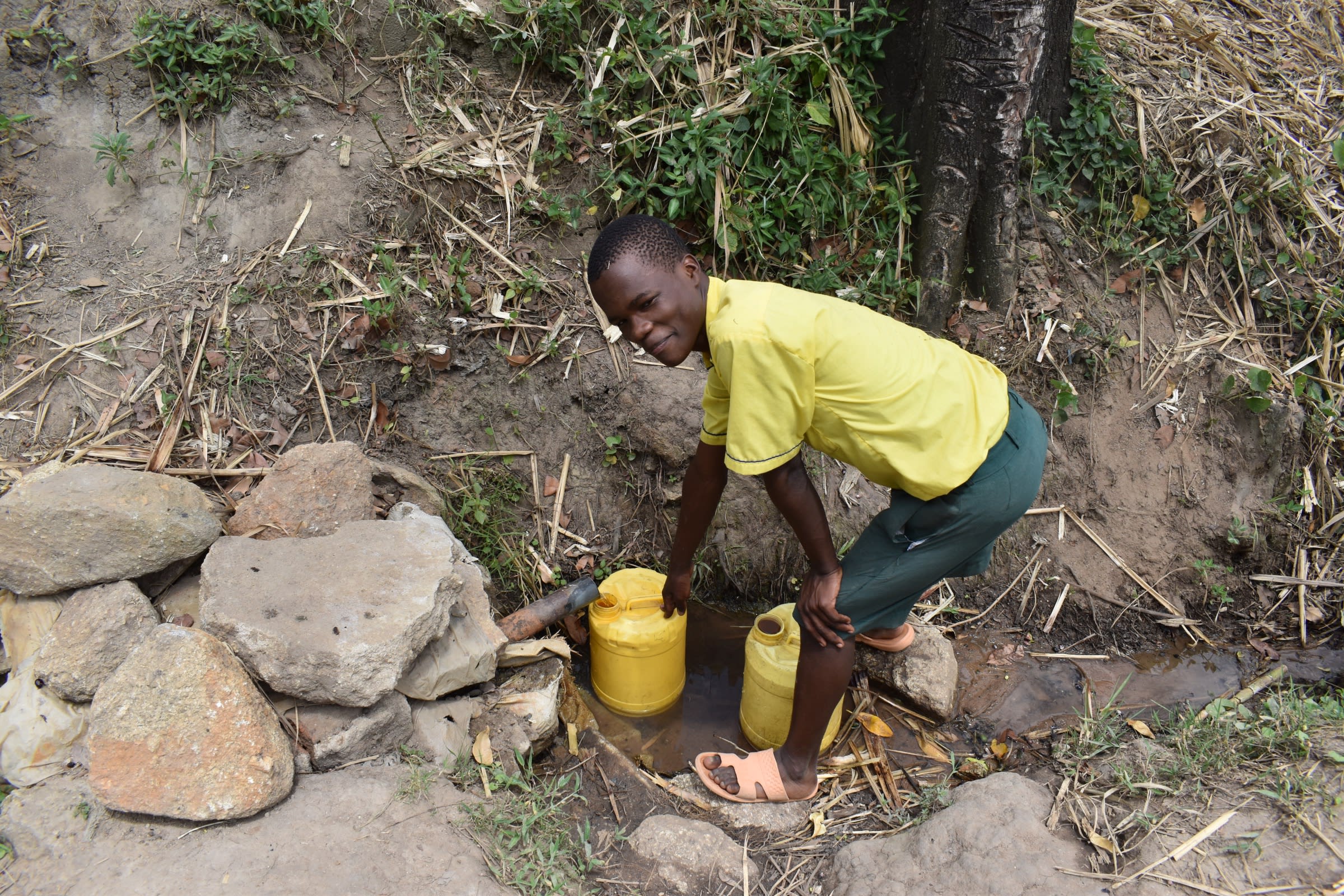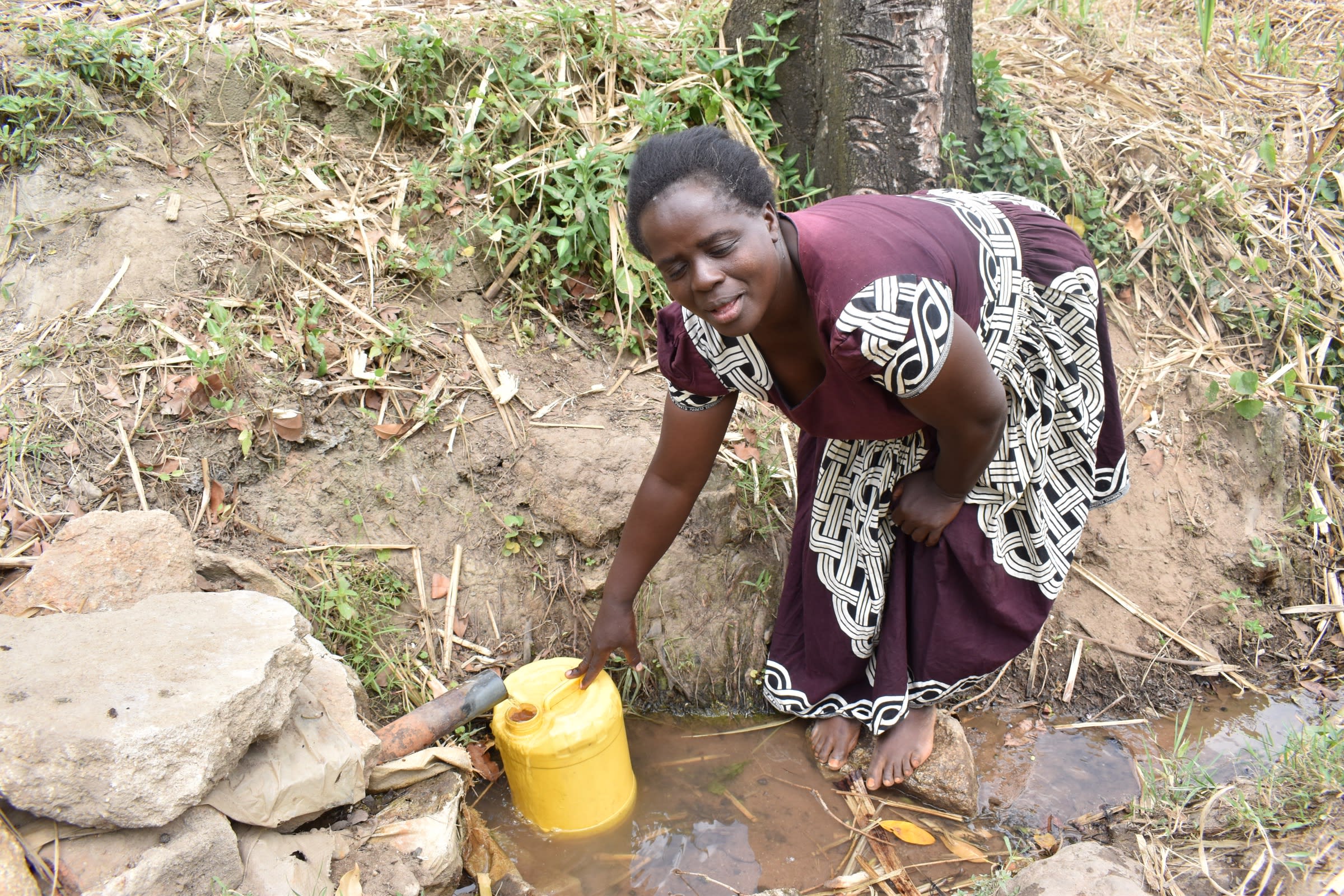Water-related diseases are the norm in Shirugu Community, especially for children. Although 320 people depend on the contaminated water from Soita Shapaya Spring, it's making all of them sick.
Not only does this water cause health issues, but it's also difficult and inconvenient to get. Everyone in the community crowds the spring during the morning and evening. Due to the hilly area around the spring, bending down and collecting water takes time, which tests the patience of those waiting for their turn.
"I have to spare some minutes in my lunch hour period so as to fetch water, just like now, simply because it's less crowded now," said 15-year-old Paul B. (pictured below), who we encountered during our visit. "The problem comes in when I get back to school late. I wish I could just fetch the water in the evening when I come [home] from school."

It's not only Paul's daily activities that are put off. Everyone in the community wastes a ridiculous amount of time fetching water. For some, the task is as arduous as it is inconvenient.
"As I continue to age, it's becoming hard for me to squat here at the spring when fetching water," said 44-year-old Everlyne Wafula, seen in the below picture. "My bones are becoming weak."

It's not clear, however, whether it's only aging that plagues Everlyne. After so many years of drinking contaminated water, her body has had to fight off waterborne diseases like typhoid, dysentery, cholera, and amoebas each time she drinks.
Upon hearing that the spring will be protected, community members expressed great hope that their lives will become easier. With stairs and a sturdy (not improvised) discharged pipe, fetching water will take less time and energy. And with proper protection, everyone's health will improve, lessening the pain they feel and the burdens of worry they bear.
What We Can Do:
Spring Protection
Protecting the spring will help provide access to cleaner and safer water and reduce the time people have to spend to fetch it. Construction will keep surface runoff and other contaminants out of the water. With the community’s high involvement in the process, there should be a good sense of responsibility and ownership for the new clean water source.
Fetching water is a task predominantly carried out by women and young girls. Protecting the spring and offering training and support will, therefore, help empower the female members of the community by freeing up more of their time and energy to engage and invest in income-generating activities and their education.
Training on Health, Hygiene, COVID-19, and More
To hold trainings during the pandemic, we work closely with both community leaders and the local government to approve small groups to attend training. We ask community leaders to invite a select yet representative group of people to attend training who will then act as ambassadors to the rest of the community to share what they learn. We also communicate our expectations of physical distancing and wearing masks for all who choose to attend.
The training will focus on improved hygiene, health, and sanitation habits in this community. We will also have a dedicated session on COVID-19 symptoms, transmission routes, and prevention best practices.
With the community’s input, we will identify key leverage points where they can alter their practices at the personal, household, and community levels to affect change. This training will help to ensure participants have the knowledge they need about healthy practices and their importance to make the most of their water point as soon as water is flowing.
Our team of facilitators will use a variety of methods to train community members. Some of these methods include participatory hygiene and sanitation transformation, asset-based community development, group discussions, handouts, and demonstrations at the spring.
One of the most important issues we plan to cover is the handling, storage, and treatment of water. Having a clean water source will be extremely helpful, but it is useless if water gets contaminated by the time it is consumed. We and the community strongly believe that all of these components will work together to improve living standards here, which will help to unlock the potential for these community members to live better, healthier lives.
We will then conduct a small series of follow-up trainings before transitioning to our regularly scheduled support visits throughout the year.
Training will result in the formation of a water user committee, elected by their peers, that will oversee the operations and maintenance of the spring. The committee will enforce proper behavior around the spring and delegate tasks that will help preserve the site, such as building a fence and digging proper drainage channels. The fence will keep out destructive animals and unwanted waste, and the drainage will keep the area’s mosquito population at a minimum.

 Protected Spring
Protected Spring
 Rehabilitation Project
Rehabilitation Project






































